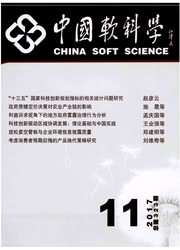

 中文摘要:
中文摘要:
随着我国计划经济体制向市场经济的转型,城市化进程加速,城市化时空格局演化成为城市发展研究的重要问题之一。本文主要采用遥感与GIS空间分析方法,利用1978年改革开放以来4个时相的遥感数据,通过城市扩展强度指数、圈层同心圆分析和扩展方向扇区分析,探讨转型期上海各时段城市化发展的空间扩展速度和水平、时空格局演化及其驱动力。研究表明:1)1979-2009年上海城市化面积增长幅度达1064%,城市用地占市域面积由3.95%增至42.22%,2000年后城市化进程加速增长;2)上海城市形态1979年呈"单核"团状分布,2000年发展到由中心城区、卫星城、郊区城镇和沿交通干道组成的"多核—多轴"多边形分布模式,到2009年城市形态呈现网络状大面积大都市化扩展模式,传统的中心城区和郊区连成一体;3)上海城市化发展驱动力具有政策和经济发展双重驱动特点,城市化扩展阶段性明显,不同时段、区域表现的城市化时空格局演化特征有所差异。
 英文摘要:
英文摘要:
China's planned economy to a market economy,accelerate the process of urbanization,urban spatial and temporal patterns of evolution of urban development is one of the important issues.In this paper,using remote sensing methods,applying 4-phase remote sensing data(in1979,1990,2000 and 2009) after reform and opening in China in 1978,we discuss the development of Shanghai's urban spatial expansion speed and level,spatio-temporal pattern of urbanization evolution and its driving forces by urban expansion intensity index,concentric circle analysis and development direction of sector analysis,the period of transition.The results show that: ①From 1979 to 2009,urban land use of Shanghai up to 1064% increase in the area,percentage of urban land use from 3.95% to 42.22%,and accelerated growth of urbanization after the year 2000;②Shanghai Urban Pattern in 1979 was the "single-core" group-like distribution,in 2000 developed into a "multi-core-axis" polygon distribution patterns,which was formed by the central city,satellite towns,rural towns along major roads,and in 2009 showed network-like metropolitan expansion mode,where the traditional central city and suburban connection;③Shanghai driving forces of urbanization are characteristic of both policy-driven and economic development,urbanization expansion stage is evident,urban spatial and temporal pattern is of difference by district for different stage.
 同期刊论文项目
同期刊论文项目
 同项目期刊论文
同项目期刊论文
 Multi-scenario-based hazard analysis of high temperature extremes experienced in China during 1951-2
Multi-scenario-based hazard analysis of high temperature extremes experienced in China during 1951-2 Human settlement and regional development in the context of climate change: a spatial analysis of lo
Human settlement and regional development in the context of climate change: a spatial analysis of lo Modelling the combined impacts of sea-level rise and land subsidence on storm tides induced flooding
Modelling the combined impacts of sea-level rise and land subsidence on storm tides induced flooding Multiple scenario analyses forecasting the confounding impacts of sea level rise and tides from stor
Multiple scenario analyses forecasting the confounding impacts of sea level rise and tides from stor Monitoring urban expansion and land use/land cover changes of Shanghai metropolitan area during tran
Monitoring urban expansion and land use/land cover changes of Shanghai metropolitan area during tran Waterlogging risk assessment based on land use/cover change: a case study in Pudong New Area, Shangh
Waterlogging risk assessment based on land use/cover change: a case study in Pudong New Area, Shangh Initialization strategies to enhancing the performance of genetic algorithms for the p-median proble
Initialization strategies to enhancing the performance of genetic algorithms for the p-median proble A spatial approach to select pilot counties for programs to correct the biased sex ratio at birth in
A spatial approach to select pilot counties for programs to correct the biased sex ratio at birth in Cross-shore suspended sediment flux in the salt marsh pioneer zone of Chongming eastern beach in the
Cross-shore suspended sediment flux in the salt marsh pioneer zone of Chongming eastern beach in the 期刊信息
期刊信息
